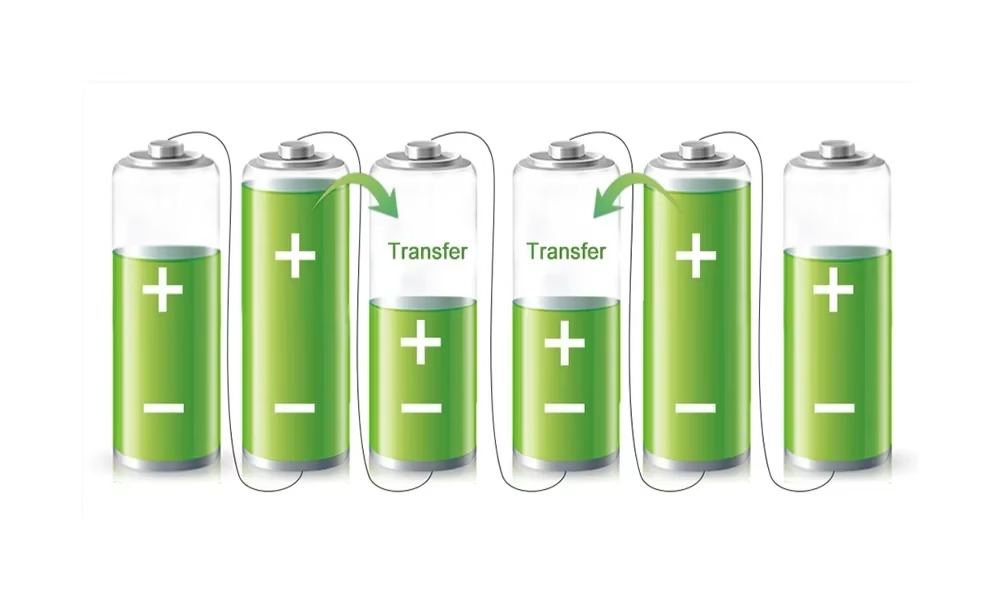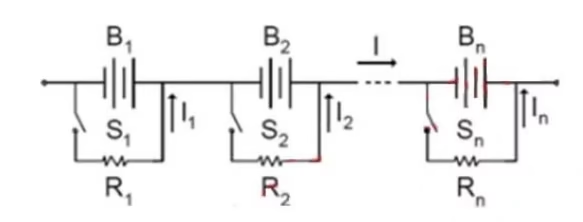Beyond preventing overcharging and over-discharging of the battery pack, a Battery Management System (BMS) must also perform effective equalization to maintain cell consistency. Currently, nearly all BMS products on the market incorporate equalization functions, which mainly fall into two types: passive equalization and active equalization.
Active equalization (lossless equalization)
Active equalization operates by transferring energy from higher-energy cells to lower-energy ones, thereby achieving voltage balance across the entire battery pack. Notably, this transfer process involves almost no energy loss.

Equalization Trigger Conditions
Active equalization activates whenever the voltage difference exceeds the set threshold—whether the battery is charging, discharging, or at rest. As a result, the system can operate continuously, 24 hours a day, until the voltage difference falls back within the acceptable range.
Balance current
Because active equalization transfers energy without generating significant heat, it can support higher balancing currents—typically reaching 1–2 A—without requiring special heat dissipation measures. Moreover, since the process is not constrained by charging time and allows extended balancing duration, active equalization is particularly suitable for large-capacity battery packs.
Passive equalization (lossy equalization)
Passive equalization discharges higher-voltage batteries through resistive loads, releasing energy as heat to achieve overall voltage balance and extend charging time for other cells.

start equalization condition
This method typically activates during the final charging stage when batteries approach full capacity. Consequently, passive equalization operates within a relatively short window—from near-full to fully charged status—usually lasting several hours depending on the charger.
Balance current
Since passive equalization dissipates energy as heat, the BMS generates significant warmth during operation. Therefore, manufacturers limit balancing currents to prevent excessive temperature rise, typically maintaining 35–200 mA ranges. Higher currents intensify heating issues.
With small balancing currents, large-capacity battery packs experience slow equilibrium efficiency, requiring prolonged periods to achieve balance. This makes passive equalization impractical for high-difference scenarios. However, its simple circuitry and low cost suit low-capacity battery packs effectively.
LVFU lithium battery is equipped with an active equalization module, the battery discharge depth is more, and the service life of the battery cell is longer.

